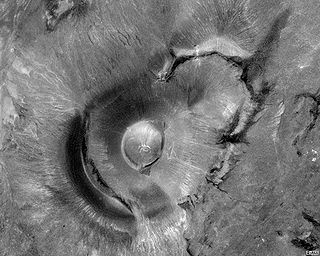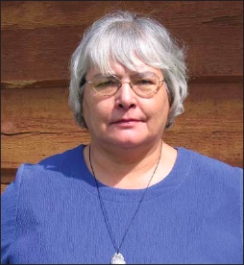Related Research Articles

The University of Calgary is a public research university located in Calgary, Alberta, Canada. The University of Calgary started in 1944 as the Calgary branch of the University of Alberta, founded in 1908, prior to being instituted into a separate, autonomous university in 1966. It is composed of 14 faculties and over 85 research institutes and centres. The main campus is located in the northwest quadrant of the city near the Bow River and a smaller south campus is located in the city centre. The main campus houses most of the research facilities and works with provincial and federal research and regulatory agencies, several of which are housed next to the campus such as the Geological Survey of Canada. The main campus covers approximately 200 hectares.

The Kainai Nation is a First Nations band government in southern Alberta, Canada, with a population of 12,800 members in 2015, up from 11,791 in December 2013.

Douglas Joseph Cardinal is a Canadian architect based in Ottawa, Ontario. His flowing architecture marked with smooth curvilinear forms is influenced by his Indigenous heritage as well as European Expressionist architecture. His passion for unconventional forms and appreciation of nature and landscape were present in his life from a very young age, and consequently developed into the unique architectural style he has employed throughout his career. Cardinal is perhaps best known for his designs of the Canadian Museum of History in Gatineau, Quebec (1989) and the National Museum of the American Indian in Washington, D.C. (1998). He is considered one of Canada's most influential contemporary Indigenous architects.
First Nations in Alberta are a group of people who live in the Canadian province of Alberta. The First Nations are peoples recognized as Indigenous peoples or Plains Indians in Canada excluding the Inuit and the Métis. According to the 2011 Census, a population of 116,670 Albertans self-identified as First Nations. Specifically there were 96,730 First Nations people with registered Indian Status and 19,945 First Nations people without registered Indian Status. Alberta has the third largest First Nations population among the provinces and territories. From this total population, 47.3% of the population lives on an Indian reserve and the other 52.7% live in urban centres. According to the 2011 Census, the First Nations population in Edmonton totalled at 31,780, which is the second highest for any city in Canada. The First Nations population in Calgary, in reference to the 2011 Census, totalled at 17,040. There are 48 First Nations or "bands" in Alberta, belonging to nine different ethnic groups or "tribes" based on their ancestral languages.

Roden Crater is a cinder cone type of volcanic cone from an extinct volcano, with a remaining interior volcanic crater. It is located approximately 50 miles northeast of the city of Flagstaff in northern Arizona, United States.

Wellington "Duke" Reiter, FAIA,, is an American architect and urban designer, and a Senior Adviser at Arizona State University. From 2008 to 2010 he was president of the School of the Art Institute of Chicago (SAIC).

Professor Janaka Ruwanpura is a Professor of Project Management at the Schulich School of Engineering at the University of Calgary. He successfully completed his term as the Vice Provost and Associate Vice-President Research (International) of the University of Calgary, Canada from Sept. 1, 2020 until March 29, 2024. He was the Vice-Provost International since 2013 until 2020. In 2022, Janaka was a winner of the Top25 Canadian Immigrant Awards selected by Canadian Immigrant Magazine.

Calgary City Hall, is the seat of government for Calgary City Council, located in the city's downtown core of Calgary, Alberta, Canada. The historic building completed in 1911 serves as the offices for Calgary City Council, consisting of the office of the Mayor, fourteen Councillors and municipal Clerk. Calgary City Hall originally housed the municipal council and portions of administration from its completion in 1911 until the construction of the Calgary Municipal Building adjacent to Old City Hall in 1985, which currently houses the offices of 2,000 civic administrators.

The field of Indigenous architecture refers to the study and practice of architecture of, for and by Indigenous people. It is a field of study and practice in the United States, Australia, Aotearoa, Canada, Arctic area of Sápmi and many other countries where Indigenous people have a built tradition or aspire translate or to have their cultures translated in the built environment. This has been extended to landscape architecture, urban design, planning, public art, placemaking and other ways of contributing to the design of built environments. The term usually designates any culture-specific architecture: it covers both the vernacular architecture and contemporary architecture inspired by the enculture, even when the latter includes features brought from outside.

Kathleen Teresa Ganley is a Canadian lawyer and politician who was elected in the 2019 Alberta general election to represent the electoral district of Calgary-Mountain View in the 30th Alberta Legislature. She was previously elected in 2015 to represent Calgary-Buffalo in the 29th Legislature. She is a member of the New Democratic Party of Alberta. On May 24, 2015 she was sworn in as the Minister of Justice and Minister of Aboriginal Affairs for the province of Alberta. On February 2, 2016 six new members were sworn into Alberta's Cabinet, and Kathleen Ganley retained the role of Minister of Justice and Solicitor General for the province of Alberta becoming one of the first non-conservatives to be appointed since the early 1960s. The department of Aboriginal Relations was renamed to Indigenous Relations, reflecting the preference of Indigenous communities, with Richard Feehan appointed Minister of Indigenous Relations.
Queen Melé Le'iato Tuiasosopo Muhammad Ali is an American filmmaker, composer, social activist and visual anthropologist. Queen and her husband Hakeem Khaaliq founded Nation19, a magazine and film production company, and she is the director of the Manuia Samoa, a social wellness hub in American Samoa.

Cheryl L'Hirondelle is a Canadian multidisciplinary media artist, performer, and award-winning musician. She is of Métis/Cree (non-status/treaty), French, German, and Polish descent. Her work is tied to her cultural heritage. She explores a Cree worldview or nêhiyawin through body, mind, emotions, and spirit; examining what it means to live in contemporary space and time.

The Calgary Central Library, also known as the Calgary New Central Library (NCL), is a public library in Calgary, Alberta, Canada, and the flagship branch of the Calgary Public Library system. The building is located in the Downtown East Village neighborhood and opened on November 1, 2018, replacing an earlier central branch built in the 1960s in Downtown Calgary.
Canadian Indigenous Languages and Literacy Development Institute (CILLDI) - an intensive annual "summer school for Indigenous language activists, speakers, linguists, and teachers" - hosted at the University of Alberta, Edmonton - is a "multicultural, cross-linguistic, interdisciplinary, inter-regional, inter-generational" initiative. CILLDI was established in 1999 with one Cree language course offered by Cree speaker Donna Paskemin. By 2016 over 600 CILLDI students representing nearly 30 Canadian Indigenous languages had participated in the program and it had become the "most national of similar language revitalization programs in Canada aimed at the promotion of First Peoples languages." CILLDI - a joint venture between the University of Alberta and the University of Saskatchewan - responds to "different sociolinguistic situations in language communities under threat" and includes three faculties at the University of Alberta in Edmonton - Arts, Education, and Native Studies. CILLDI provides practical training to students which is "directly implemented back in the community." Initiatives like CILLDI were formed against the backdrop of a projection of a catastrophic and rapid decline of languages in the twenty-first century.
Elder Doreen Spence is a Canadian indigenous rights activist. She founded several indigenous rights organisations in Alberta and advises international organisations in indigenous rights issues.
Dr. Krystal Tsosie (Diné) is a Navajo geneticist and bioethicist at Arizona State University and activist for Indigenous data sovereignty. She is also an educator and an expert on genetic and social identities. Her advocacy and academic work in ameliorating disparities in genetics through community-based participatory research has been covered by various national news sources, including The New York Times, Nova, The Washington Post, NPR, The Atlantic, Forbes, and The Boston Globe.

Marie Smallface Marule was a Canadian academic administrator, activist, and educator. She served as executive director of the National Indian Brotherhood (NIB), chief administrator of the World Council of Indigenous Peoples (WCIP), and secretary of the Indian Association of Alberta. Marule was president of Red Crow Community College for two decades, and led the creation of several indigenous studies programs. She was previously an assistant professor of Native American studies at the University of Lethbridge.
Sarah Alexandra Carter is a Canadian historian. She is Professor and the Henry Marshall Tory Chair at the University of Alberta in both the Department of History and Classics and the Faculty of Native Studies with noted specialties in Indigenous and women's history.
Lillian Shirt was a Cree women's rights activist from Saddle Lake Cree Nation in Treaty 6 Territory, Alberta, Canada who was known for her political initiative against the discrimination towards Indigenous women and their inadequate access to housing, employment, and human rights.
Indigenous architecture in the United States and Canada emphasizes in contemporary designs the histories of Native Americans in the United States and in Canada. Many indigenous nations have embraced modern architecture styles when constructing new cultural centers, memorials, and museums. However, this modern appearance is molded into designs of great symbolism that demonstrate the building’s connection to countless generations of tradition. Adding accents of traditional architecture to modern buildings is symbolism in itself - it demonstrates how Indigenous peoples define themselves by their culture yet strive to become an increasingly visible part of contemporary society.
References
- 1 2 3 "Groundbreaking indigenous architect signs on to ASU faculty". ASU Now: Access, Excellence, Impact. 2018-03-01. Retrieved 2020-08-19.
- 1 2 3 "Architecture & Design NOW Series: Wanda Dalla Costa". www.uleth.ca. Retrieved 2020-08-19.
- 1 2 "Indigenous Perspectives on the Notions of Architecture". THE SITE MAGAZINE. 13 June 2018. Retrieved 2020-08-19.
- 1 2 3 4 5 6 "Wanda Dalla Costa | iSearch". isearch.asu.edu. Retrieved 2020-08-19.
- 1 2 "Member Spotlight: Wanda Dalla Costa". Association for Women in Architecture. Retrieved 2020-08-19.
- 1 2 3 4 "Wanda Dalla Costa | Arizona State University - Academia.edu". asu.academia.edu. Retrieved 2020-08-20.
- ↑ "2019 Honorees". YBCA. Retrieved 2020-08-20.
- 1 2 "Wanda Dalla Costa - Person". Global Institute of Sustainability and Innovation. Retrieved 2020-08-20.
- ↑ Arviso, Brianne; Parrish, Kristen; Costa, Wanda Dalla (2018-03-29). "Unique Features of Conducting Construction Activities within Tribal Communities". Construction Research Congress 2018. New Orleans, Louisiana: American Society of Civil Engineers: 233–242. doi:10.1061/9780784481295.024. ISBN 978-0-7844-8129-5.
- ↑ Dalla Costa, Wanda (2020). "Indigenous Futurity and Architecture: Rewriting the Urban Narrative". Architecture Australia. 109 (2): 56–58.
- ↑ "New table in Labriola Center recalls canals built by Hohokam". ASU News. 2021-11-24. Retrieved 2022-03-24.
- ↑ "Aboriginal Learning Centre, Dover Ridge Drive, Calgary, AB (2022)". www.schoolandcollegelistings.com. Retrieved 2022-03-24.
- ↑ "Moodie Residence" (PDF).
- ↑ "redquill architecture". discjockeyparty.com. Retrieved 2022-03-24.